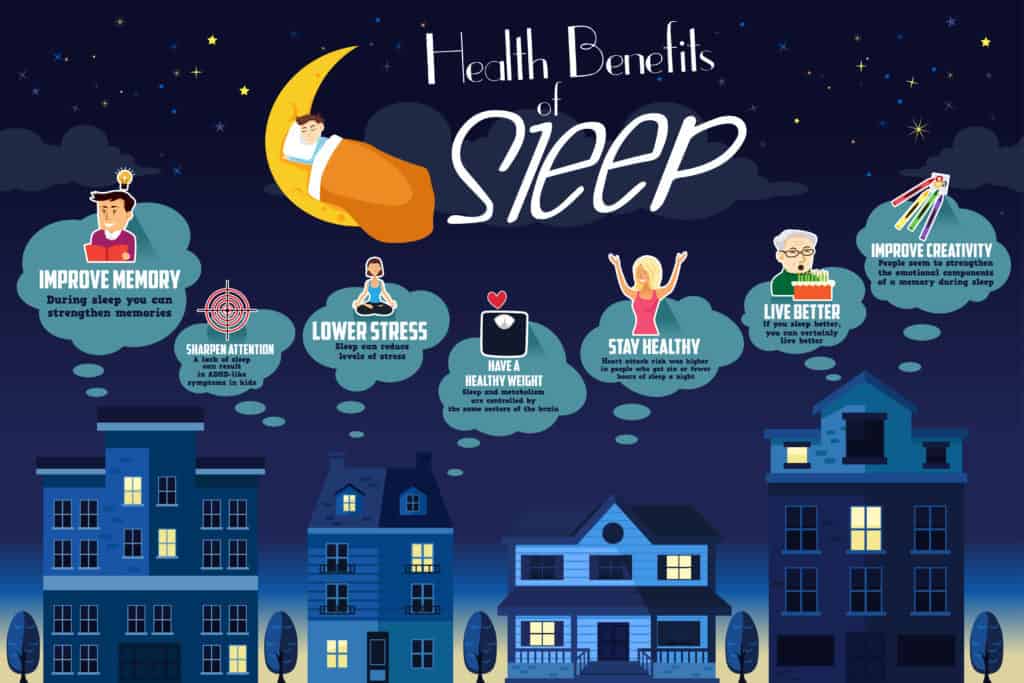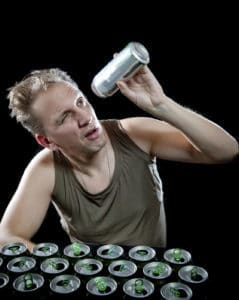What do you think is the most frequent answer to the question, What would you like to drink? Whether at someone’s home or in a restaurant, for the most part the answer is usually, Coffee, please! If we’re not drinking coffee at homes or restaurants, we’re drinking it at the coffee shops we see on every street, the coffee machines we see in every office and hospital, or the high-end coffee boutiques we see in every city.
In my book, this says a whole lot about our addiction to caffeine! Trust me—it’s just another socially accepted addiction that keeps you going back for more and more. Wishing you could give it up? Read on if your answer is yes. By the end of this article, you’ll have the tools you need to meet the challenge, and it’s not nearly as tough as you imagine. (Smile)
With all the information available to us on this subject, we know there’s a downside to caffeine. But we often rationalize our coffee habit by searching only for information that says how healthy it is. (Not!) Always verify the source, as much of this information comes from retailers who want to promote their products.
We also justify our addiction: Well, I only drink a few cups a day, we say to ourselves. And the more dangerous justification (as you’ll see when you read on): Coffee keeps me going and makes me eat less.
Quitting does, in fact, occur to some of us. However, when we try to get off that merry-go-round, our nervous system literally goes berserk attempting to convince us that our coffee habit isn’t really that bad after all. And back to this brain poisoning substance we go. (Sigh)
Personal note: Since the Weston A. Price Foundation and Sally Fallon Morrell don’t recommend coffee or chocolate, and my own research on coffee favored their decision, I gave up both of these substances long ago. Since misery loves company, let me reassure you that I know personally the decision to quit may be a hard one. Nevertheless, read on. You too may be convinced that quitting is well worth the effort.
Addictions
The addiction to any drug (and caffeine is a drug), is both mental and physical. I learned from my studies that the physical aspect of addiction is the first step on the road to dependence, and it will eventually lead to mental addiction. After that we are truly hooked.
This article will therefore focus on the physical effects of caffeine and those things that will help break the physical habit. Once you can use the tools I recommend below to sustain the physical effort one day at a time, like others have done successfully, the mental habit will weaken and eventually dissolve. It won’t return unless you go back to that physical first step. So let’s get started by asking the most burning questions we all have about coffee.
What Makes Us Crave Coffee?
In researching our craving for coffee and/or chocolate (which contains a similar substance found in caffeine called theobromine that unduly stimulates the adrenals beyond their capacity to function normally), as well as marijuana, alcohol, refined sugar, cocaine, and other addicting drugs, we find that, according to Julia Ross, author of The Mood Cure, people hooked on caffeine tend to be low in catecholamines (pronounced kat-ə-ˈkō-lə-ˌmēn). These are the brain chemicals that provide energy and alertness.
“The Brain from Top to Bottom” provides a clear picture of how caffeine affects the brain neurotransmitters. You can read more about it in my upcoming blog post “Be Happy—No Matter What.” The information below, quoted from the article “Your Brain on Coffee” by Bethany Ramos, should also offer a strong incentive to change your perception of what coffee drinking does to the brain, and therefore provide a way forward that recognizes coffee is truly our enemy. It might then give you the courage to leave coffee behind.
Personal Note: Though this article is an excellent reference on the negative effects of caffeine in the body, the site itself includes links to tips on brewing coffee and other so called positives on coffee which I do not endorse.
“But what’s so wrong with enjoying a few cups of coffee to perk up your mood and make it through the rest of the day in one piece? Caffeine can immediately improve the mood by stimulating dopamine, although it depletes serotonin over time, which will ultimately cause you to feel worse.
“And the depletion of serotonin is no laughing matter. Serotonin is critical to regulate a number of bodily functions, including sleep cycles, pain control, carbohydrate cravings, and digestion. Low levels of serotonin have also been associated with depressed immune function.”
So while coffee helps you in the short term, it’s hurting you in the long run. Personal note: Dopamine is one of the catecholamines I  reference above!
reference above!
Sleep Deprivation and Adenosine Receptors
From Livestrong we read: “Caffeine’s effects of increasing energy and making you feel more alert are due to its interaction with adenosine receptors in the brain. Both caffeine and adenosine are neurotransmitters belonging to a chemical group known as xanthine…
“In your brain, caffeine appears as adenosine to nerve cells and is able to bind to adenosine receptor sites. As a result, your brain does not detect adenosine, and nerve activity does not slow down. Instead, caffeine increases brain activity, making you feel more energetic and less sensitive to your body’s natural rhythms of wakefulness and sleep.”
Personal note: Adenosine receptors produce drowsiness, which is a signal to the brain that it needs rest. So it makes sense that consistently reawakening the brain with caffeine—thus overriding the adenosine signal that it needs rest—leads to accumulated brain stress. We may become walking zombies from sleep deprivation!
Over time, the practice of ignoring the signal that your brain needs rest can bring about disastrous physical effects and mental disorders. This is truly a point to ponder the next time you’re tired and reach for yet another cup of coffee instead of taking a brief rest. Or, better yet, why not learn how to maintain a continual healthy energy level without caffeine? You may even start to experience the deep, restful sleep we all crave.
Caffeinated Energy Drinks and Sodas
It’s also of vital importance to understand the other, equally destructive, group of caffeinated beverages—energy drinks. Some of these even claim to have health benefits because they contain vitamin B. (But, I might add, whatever vitamin B they offer is synthetic, which makes it hard for the liver to convert.) One popular brand of canned energy drinks contains a whopping 80 mg of caffeine in each 8.4-ounce can, and some people drink numerous cans daily. Now that’s what I call destructive to the cells of the brain!
The same goes for many soft drinks. One popular soft drink contains 54 mg of caffeine per 12-ounce can or bottle, and some people become so addicted to it that they need medical help to get off—usually after diabetes has set in!
Personal note: I include a recipe for a natural energy drink below. It may possibly help you kick this particular addiction. Additionally, for a superior whole food B complex, I recommend Cataplex B tablets from Standard Process.
Breaking the Caffeine Habit: Real Energy Secrets
First and foremost, you must sincerely decide that your health is worth the effort it will take to break the habit. After this initial step, you may want to find a friend willing to take the journey with you. However, with or without a companion, the four steps below will forever change your life.
- Figure out when you most crave coffee or high-caffeine energy drinks, and decide what would be best, in your particular circumstances, to replace it with. May I suggest water? (Or see energy drink recipe below.)
- Make the conscious decision to change your diet to include the many foods that have been shown to keep your brain neurotransmitters alert and healthy. (These are listed at the bottom of this blog post.)
- Prayer and/or meditation are powerful tools that will help you develop the will and inner strength to bear the short-term discomfort of quitting caffeine. Generally, by day three your withdrawal symptoms will begin to subside.
- Find time in your day to schedule a power nap of 30–40 minutes. It’s not necessary to fall asleep, but rest is essential. If this isn’t possible, try a full day of real rest after reading my blog post “Why Your Brain Needs a Day of Rest.”
Parting Thoughts and a Few Alternative Coffee Suggestions.
Instead of refined sugary snacks, try these:
Snacks that deliver real nutritional energy: Try pemmican, dried beef, buffalo or fish jerky. Crispy nuts in measured amounts are a good choice. Hard boiled eggs, pork rinds and raw cheese are favorites of mine for a quick pick me up. The Coconut Research Center is a great resource for all things related to this powerful, energizing, and calming brain food. Also try these great Sugar-Free No-Bake Coconut Cookies (scroll to the recipe section at the end of the post).
The Diet Cure: In her book The Diet Cure, author Julia Ross recommends tyrosine or DLPA (phenylalaine) to stop caffeine cravings. This book has earned a thumbs up book review from the Weston A. Price Foundation.
Recommended Coffee Alternatives
Maya nuts: These are a new addition to the 2017 Weston A. Price Shopping Guide. Erika Vohman, Founder and Executive Director of the Maya Nut Institute (the USA headquarters are located in Crested Butte, Colorado) says that it’s a unique type of nut, and many people suggest that it tastes like coffee. However, the Maya nut is caffeine-free. You can brew Maya nut powder in your coffee maker or French press, or you can simply boil it in your regular stovetop tea kettle!
Personal note: In my experience I found it takes approximately twice as much of the Maya nut No-Es Cafe product to bring the flavor up to that expected coffee taste. However, given that my preference was always to drink my coffee strong, this may not be the case for others.
A little more about the Maya nut from the Maya Institute (emphasis mine):
“Maya is a wild harvested rainforest food that grows on one of the largest trees in the lowland jungles of Mexico, Central and South America and the Caribbean islands of Cuba, Jamaica, Haiti and Trinidad. The Maya tree’s roots reach deep into the fertile soils of the forest to produce one of the most nutritious foods in the world.
Maya is naturally caffeine and gluten free, vegan and one of the most ‘paleo’ foods currently available. The Mayan culture sustained itself on Maya seeds and achieved remarkable artistic and cultural milestones which remain the benchmark for early cultures worldwide. Maya can be used in a wide variety of sweet and savory food and drinks, and its high fiber and nutrient content help keep you healthy and happy. 100% of proceeds from the sale of Maya Super foods products go to support our programs providing training, jobs and income for women, Maya school snacks for children in Central America and reforestation with Maya trees in deforested regions throughout Central and South America and Haiti.”
You can find No-Es Cafe and other Maya nut products at the Maya Institute’s online store.
Personal note: Maya nuts contain a specific type of complex carbohydrate that doesn’t raise your blood sugar. These special substances are called oligosaccharides, a type of resistant starch that may, in the beginning, cause some mild bloating. But, as it states on the Maya Institute website: “Be patient, STICK WITH IT, and you will enjoy better health, better sleep, better digestion, better moods and better energy within 2–3 weeks!”
Herbal Coffee Ebook by Jessica Espinoza
DIY Herbal Coffee Substitutes, a comprehensive ebook by Jessica Espinoza, is one of the very best guides to coffee alternatives that I’ve found. With fifty pages of tasty herbal substitutes for coffee, it truly is worth its salt! I purchased this ebook and use it all the time. Go take a peek and buy it for yourself—you won’t regret it.
Personal note: Many people treat their depression based on studies that show eating chocolate elevates dopamine levels, although it unnaturally spikes the adrenal glands. Sally Fallon Morrell recently responded to that claim with the following comment: “Have you tried drinking a mug of broth when you have coffee cravings? The glycine in broth will raise dopamine if it is low.”
Best Foods For Keeping Us Alert and Happy
You can find sources for these foods in the Weston A. Price Foundation Shopping Guide and the Find Real Food app. Or you may utilize the various resources and articles available on the WAPF website. Additionally, you may attend a Weston A. Price chapter meeting in your locale for lots of great free food and sources in your area.
- Cod liver oil (vitamins A and D). My preference is Green Pasture.
- Butter from grass-fed animals (arachidonic acid, vitamins A and D).
- Egg yolks from grass-fed chickens (arachidonic acid, vitamins A and D).
- Fats from grass-fed animals (arachidonic acid, vitamins A and D).
- Organ meats from grass-fed animals (arachidonic acid, vitamins A and D).
- Bone broths (calcium). For recipes, see Sally Fallon Morrell’s Nourishing Broth and Monica Corrado’s Meat Stock and Bone Broth (featuring important cooking techniques for those on the GAPS diet).
- Raw whole milk from grass-fed animals (calcium, arachidonic acid, vitamins A and D).
- Fish eggs (vitamins A and D).
- Small whole fish (calcium, vitamins A and D).
- Shell fish (vitamins A and D).
- Coconut oil (one of my personal suggestions).
DIY Homemade Electrolyte Energy Drink
—Adapted from Top 10 Home Remedies
Ingredients
1 cup water
2 teaspoons fresh minced ginger or 3–5 slices fresh, thinly sliced ginger
1 tablespoon lemon juice
¼ teaspoon sea salt
1–2 tablespoons raw organic honey
Instructions
1. Heat water in a pan.
2. Throw in the ginger and simmer for 3–5 minutes.
3. Add lemon juice, sea salt, and raw organic honey.
4. Mix thoroughly to dissolve honey and salt.
AUTHOR’S NOTE
To choose your organically grown and fresh ingredients wisely, use the following criteria:
- chemical- and hormone-free meat
- wild-caught fish
- pasture-raised, organic eggs
- whole, unrefined grains
- virgin, unrefined, first-press organic oils
- whole-food, unrefined sweeteners
- pure, clean, spring water
- sea salt
- raw and/or cultured milk and cream products
Photos from iStock/suzieldk (girl in coffee cup); ttsz (stress system); artisticco (benefits of sleep); Konstik (man looking in can)
Note from Maria: I am a Certified Natural Health Professional, CNHP, not a medical doctor. I do not diagnose, prescribe for, treat, or claim to prevent, mitigate, or cure any human diseases. Please see your medical doctor prior to following any recommendations I make in my blogs or on my website.





Fantastic article! Thank you, Maria.
I am curious though. You’ve made no mention of tea in your article. Do you consider it as destructive as coffee and chocolate?
As a Traditional Chinese Medicine practitioner, I view tea much more like an herbal medicine and recommend different kinds of tea depending upon the presentation of my patient.
I’d love to hear your views.
Cheers,
Terry Fox, L.Ac.
Hello Terry. Maria asked me to reply the following:
Glad you asked, and no I did not include tea in the article because it would have meant a whole new set of links and a much longer discussion in a blog post that is limited to just so many words. However for the record, had there been more room for discussion, I would not have included green tea, such as Sencha and others which as a holistic practitioner you may use. My reasons for that is primary because I understand that studies show that caffeine and L-theanine can have synergistic effects. The combination of the two is particularly potent at improving brain function. I would therefore not lump the green teas in the coffee category as I’ve not studied that particular phenomena of this combination in order to make as emphatic a statement as I do with coffee and energy drinks which in my opinion have devastating effects. Tell us more, as your comments on the green tea subject would be valuable. In fact, why don’t you write a post for SRP on your use of teas in your practice!
Maria Atwood, CNHP
This is a great article!